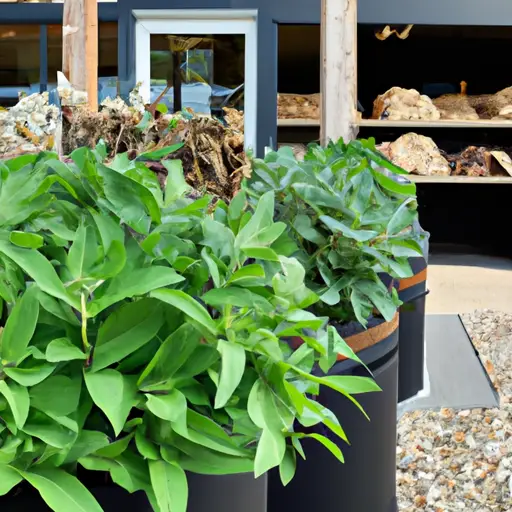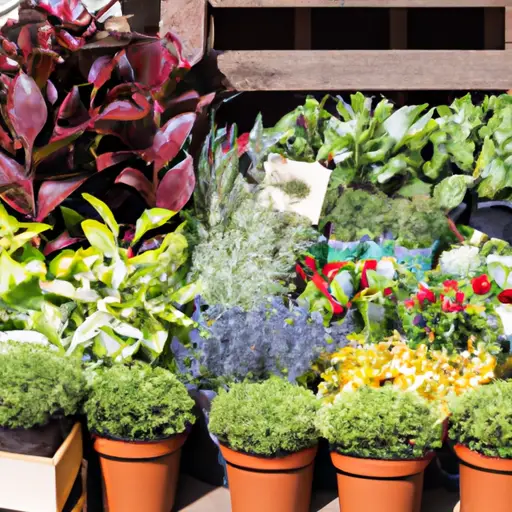Container gardening is a delightful and flexible way of nurturing plants in limited spaces. Whether you have a small balcony, a tiny patio, or even just a windowsill, container gardening allows you to bring the beauty and benefits of plants into your own home. It is an art that brings joy, serenity, and a sense of accomplishment to garden enthusiasts. In this guide to flourishing plants in containers, we will explore the art of container gardening and provide useful tips and techniques to help you create your own miniature garden oasis.
One of the greatest advantages of container gardening is its versatility. With containers, you can easily move your plants around to find the best light conditions or change the arrangement whenever you desire. This flexibility allows you to experiment with different plant combinations and designs, creating an ever-changing display that reflects your personal style.
When selecting containers for your garden, consider both functionality and aesthetics. Choose pots or planters that have adequate drainage holes to prevent waterlogging, as excessive moisture can lead to root rot. Additionally, ensure that the size of the container suits the needs of your chosen plants – larger plants require larger containers to accommodate their root systems.
The choice of potting soil is crucial for successful container gardening. Utilize high-quality potting mixes specifically formulated for containers as they provide good drainage while retaining sufficient moisture for healthy plant growth. Avoid using garden soil alone as it tends to be too heavy and may not provide adequate drainage.
Now that you have selected your containers and prepared the proper growing medium, it’s time to choose which plants will thrive in your mini-garden. The possibilities are endless – from vibrant flowers to lush herbs or even productive vegetable gardens – it all depends on your preferences and environmental conditions.
Consider factors such as sunlight exposure, temperature variations throughout the day, humidity levels, and wind conditions when selecting suitable plants for your container garden. Some varieties may require full sun, while others flourish in partial shade. By choosing plants that align with your climate and growing conditions, you increase the chances of successfully nurturing them.
When arranging your plants within the containers, think about creating a visually appealing composition. A good starting point is considering height variations – use taller plants at the back or center of the container and shorter ones towards the front. This creates a sense of depth and balance in the arrangement. Additionally, combine plants that have contrasting textures or complementary colors to add visual interest and create harmonious combinations.

Watering is a crucial aspect of container gardening. Due to their limited root space, plants in containers often require more frequent watering compared to those in traditional garden beds. However, it’s important to strike a balance between providing enough moisture for growth while avoiding overwatering, which can lead to root damage.
Regularly check the moisture levels in your containers by inserting your finger into the soil up to the second knuckle. If it feels dry at this depth, it’s time to water. Ensure that you water thoroughly until it starts draining out from the bottom of the container, guaranteeing that all roots receive adequate hydration.
Fertilizing is another essential practice in container gardening. As potting soils gradually lose their nutrient content over time, regular fertilization helps replenish these vital elements for healthy plant growth. Choose organic or slow-release fertilizers formulated specifically for containers and follow recommended application rates.
Beyond routine maintenance tasks such as watering and feeding your plants, be mindful of pest control and disease prevention measures. Regularly inspect your plants for any signs of pests or diseases such as mold, aphids, or whiteflies. Promptly address any issues by using appropriate organic insecticides or implementing cultural practices like adjusting humidity levels or providing proper air circulation.
One often-overlooked aspect of container gardening is pruning and grooming your plants regularly for optimal growth and appearance. Pinch off spent flowers or yellowing leaves to redirect energy towards new growth and encourage continuous bloom. Pruning also helps shape the overall appearance of your container garden, ensuring that it remains tidy and visually appealing.
Throughout the growing season, be attentive to the changing needs of your plants. As they grow and mature, some plants may require larger containers or additional supports to prevent them from toppling over. Repotting may be necessary when roots become overcrowded or start protruding from drainage holes.
Container gardening is a fulfilling art that allows you to create stunning displays in limited spaces. With proper attention and care, your miniature garden can thrive and bring joy to your everyday life. Remember to experiment, embrace creativity, and enjoy the journey of nurturing your flourishing plants in containers.













